Depending on your circumstances, a tripped circuit breaker can be a minor inconvenience or a major disaster.
A breaker trips when it is overloaded by the amount of power that is being used. This is a widespread problem, and several different things can cause it.
If the breaker trips with nothing plugged in, there is likely an issue with the wiring.
Another common reason might be that your circuit breaker has gone bad. You should call an electrician as soon as possible if this seems to be the case.
There is usually a simple solution to these problems, even when they seem nasty and mildly annoying. There could be a short circuit, overload, or ground fault in this situation. Then, if you want to start over, you can unplug and reset it.
You will learn how to fix a tripping circuit breaker in this post, and you’ll get answers to some questions you might have.
Furthermore, I will assist you in diagnosing any problems with your breaker, so you know where to look when it trips in the future.
Why Your Circuit Breaker Keeps Tripping with Nothing Plugged In?
There is always some load on your breaker unless the electricity to your building or home has been cut off completely. Nothing plugged in is unlikely to cause your circuit breaker to trip continuously.
Now that you know why your circuit breaker is tripping despite not having anything plugged into it let’s explore some possibilities.
1. It’s Time To Replace Your Circuit Breaker
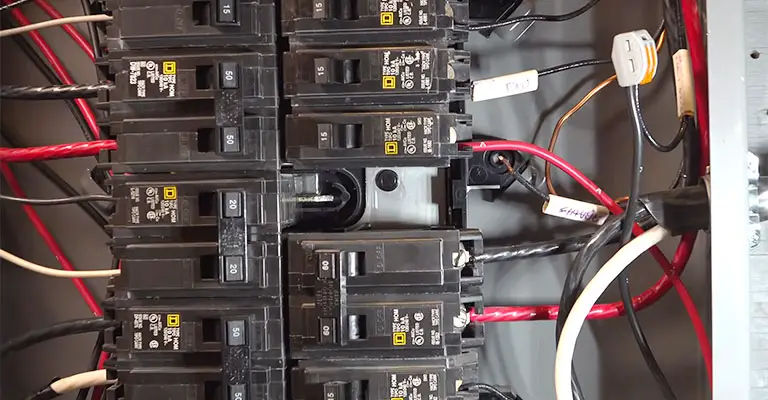
There is a possibility that your circuit breaker needs to be replaced. However, in some cases, a circuit breaker may just be malfunctioning rather than going bad, which is why it is nearly impossible to trip without devices plugged in.
If you want to change it out for another, there’s nothing you can do. To see if some devices in the surrounding area are actually connected to the breaker in question, unplug some of them if you don’t want to spend that much money.
Damaged Breaker Warning Signs: How To Recognize Them?
Any household item can become damaged, including circuit breakers. If your breakers have not been serviced in the last ten years, there are many warning signs that they are faulty. If you notice the following, replace your breaker:
- Over ten-year-old breakers
- Wear and tear or scratch marks on the breaker
- Frequent trips of the breakers
- You can’t reset your breaker
- The electrical box gives off a burning smell
2. There Is A Damaged Input Wire
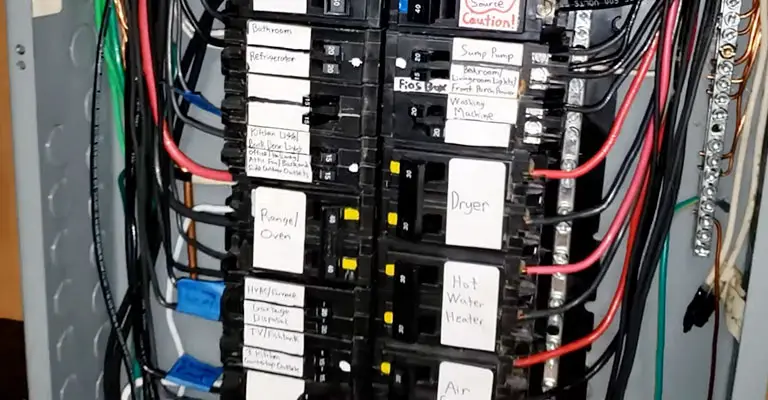
Next, check if a damaged input wire is causing current leakage if you’ve checked the first box. Again, in the absence of your trusty circuit breaker constantly tripping, you could be in danger.
The fact that it’s annoying doesn’t change that. It will take an electrician to find out where the leak is coming from so you can fix it.
In terms of both expertise and equipment, this is not a weekend project most people would be able to handle.
3. There Is Something Plugged In
It’s probably something you’ve already checked for a million times, but make sure you haven’t overlooked anything else that could cause the breaker to trip.
You may have plugged in a device outside or in the garage that you have forgotten about. You may not realize that a device is on the same circuit as one in another room.
Using an electronic circuit breaker finder, you can find out which outlets are connected to which breakers.
Consider unplugging a few devices around the breaker to check if they are connected to it, especially if you don’t want to make that investment.
4. Faulty Ground
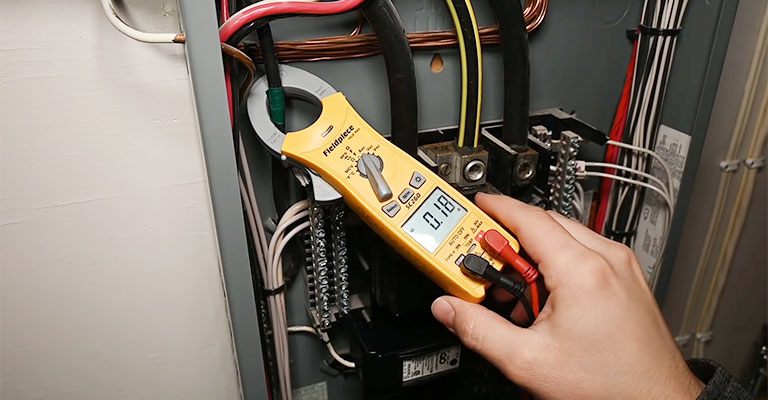
A ground fault occurs whenever a hot or active wire connects with a ground wire or a grounded area of an appliance or junction box.
It is typical for the ground wire to be green, the hot wires to be black, and the neutral wire to be white. An overload occurs when the hot and ground wires come into contact, resulting in a circuit breaker trip.
5. Short Circuit
As a result of a large amount of current flowing through the wires in a short circuit, the breaker trips, overloading the outlet, in this case, a neutral wire touches an active or hot wire, causing a malfunction.
Electrical switches and appliances that are defective or damaged are the likely causes of this problem. Damaged or chewed wires and unsecured connections are other causes.
Not attending to a short circuit on time may cause a fire hazard. When a fuse blows, the tripping breaker might also spark because of how hot it makes the wiring.
Once the smoke starts coming out of the fuse box, you will notice it is already dangerous.
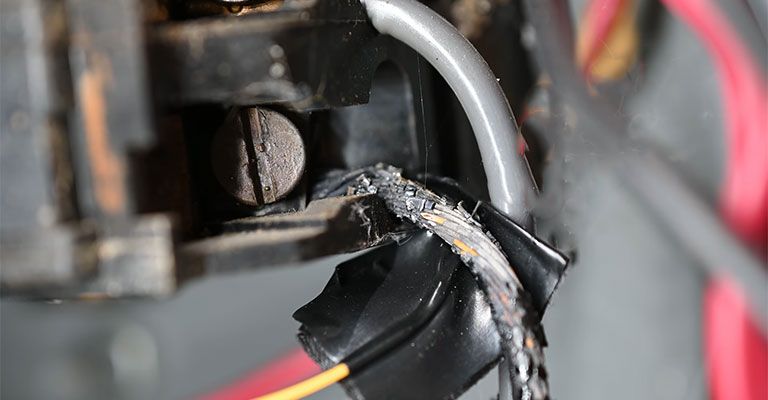
What Is A Circuit Overload?
The term circuit overload simply means that your breaker has been overworked. Overloading causes the breaker to trip when more appliances are plugged in than they can handle.
Microwaves, for example, could cause a circuit overload if they keep tripping the circuit because they draw extra current.
Is It Possible To Replace Your Breaker Yourself?
If you are new to handling electricity, I do not recommend fixing your breakers yourself as a DIY project.
Depending on your landlord, replacing the breaker may not be allowed in your rental home to improve neighbors’ safety.
If you don’t know where to ‘not touch,’ replacing a breaker can be quite dangerous. Replacing a unique breaker can be complex, as not all breakers are alike. Hence, hiring an electrician is recommended.
How To Fix A Breaker That Trips With Nothing Plugged In?
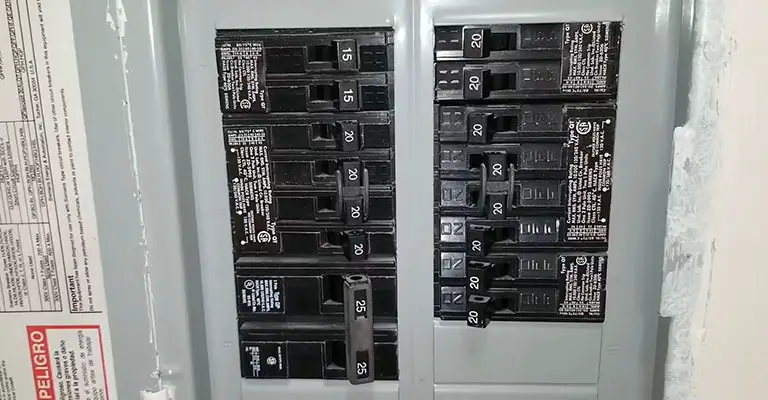
Do you have a circuit breaker that keeps tripping even when you have nothing plugged in? You’re not the only one who feels this way.
The reason why your breaker may be tripping could be for many different reasons. Fixing it, however, isn’t just a matter of doing it yourself. It’s best to have an electrician take care of it.
Method 1: Replace Your Circuit Breaker
As a last resort, this should be considered. It’s a fairly simple procedure but working with the panel is dangerous because the hot bus bars are always filled with energy.
Therefore, it is highly recommended that you hire an expert to replace the breaker.
Method 2: Reset the Circuit Breaker
The breaker can be rested by turning it back “ON” and “OFF” again. There will be an indicator light that will turn on, indicating that it is resetting. Process completion is signaled by the indicator light going out.
The test button can also be used to test the breaker. As a result, the breaker will automatically turn off. However, it must be replaced immediately if it does not trip.
Method 3: Check the Input Wires
Also, the input wires on your breaker may wear out over time, causing it to trip repeatedly. In the event of a broken wire, the current can leak out, causing a short circuit and tripping the breaker.
When certain appliances are powered by faulty wiring, they can trip the breaker frequently, leading to electrical shock.
It would be better if you hired a professional to deal with electrical wires if you have never handled them before.
Method 4: Switch Off All The Appliances and Lights Again
The first step to dealing with an overload is to turn everything off and check what could be on that is causing the trip. In most cases, overloaded breakers do not immediately shut down.
As a result, they overpower the switches and outlets by trying to power them until they become too hot and overwhelmed.
Turn off all connected appliances immediately to prevent a power surge when the breaker is reset. It may take a few tries to figure out what’s wrong by turning on each device individually.
Method 5: Test Your Circuit Breaker
To diagnose your breaker correctly, you need to know how it behaves when all appliances and lights are off.
I know you’ve already tried this a few times before researching it but learning the behavior of your breaker when all appliances and lights are off is crucial.
Lights can be turned back on, but appliances need to be disconnected so your circuit breaker can be tested. Two things should be observed and checked:
1. If the lights come back on, but the breaker trips after a short period.
2. A flickering “ON” and “OFF” occurs as the breaker trips.
You may be dealing with a wiring issue, a circuit issue, or an overloading (yes, you are correct).
A circuit breaker may be experiencing an overload if your lights come on but go out after a while. Make sure the breakers are not overloaded by going through your checklist.
It could be a faulty wire or a damaged breaker if the breaker trips immediately when you turn it on. If the wiring is damaged, you might need a professional to inspect it and fix it as soon as possible.
Method 6: Identify the Tripped Circuit Breaker
Identify the tripping circuit breaker by going to your circuit breaker box and opening it. The location of circuit boxes is usually in an open area free of obstructions or elements.
A simple lock is generally found on most boxes enclosed in a small metal plate. Overloaded circuit breakers produce a humming sound before turning off and switching to the “OFF” position.
Therefore, despite unplugging all other devices, the breaker could still be in the “OFF” position if there is no sound.
What to Do If a Breaker Won’t Reset?
It is highly recommended that you contact your electrician if the breaker does not reset.
Several things could be causing the problem, such as ground faults, short circuits, circuit overloads, or faulty breakers.
There will be a permanent solution to the problem after a professional inspect the problem.
Final Words
Hopefully, with your circuit breaker tripping with nothing plugged in, you will understand why it keeps tripping.
A professional electrician should be contacted if you do not have experience dealing with the current.
Getting them to troubleshoot first is better than paying them for nothing. Furthermore, figuring out and repairing the cause of the constant tripping shouldn’t take too long.






